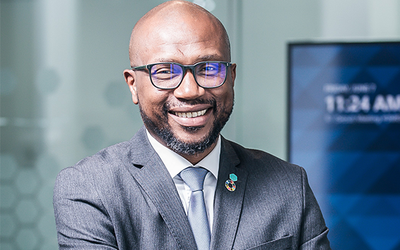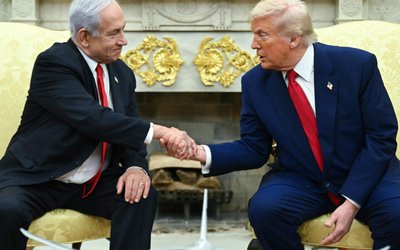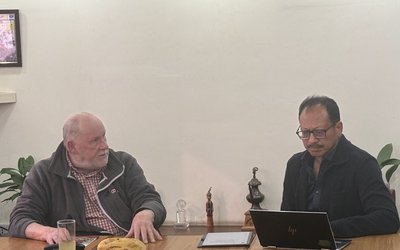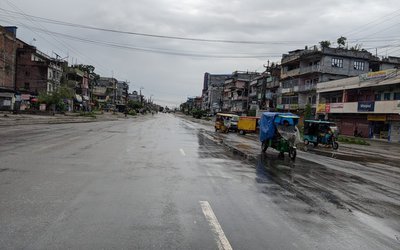
How do you see the present state of bilateral relation between Nepal and Korea? What are the basic characteristics of the relation?
Since the establishment of diplomatic relation between Korea and Nepal in May 1974, the two countries have been enjoying very cordial and progressive relation with tremendous growths in various fields including political, economic and social fronts. There are around 35 thousand Nepali workers currently working in Korea under the Employment Permit System (EPS). Likewise, the opening up of Nepali Embassy in Seoul in 2009 is another milestone in our relation that highlights the importance attached by both the countries to each other’s relation. The number people visiting each other’s country is increasing rapidly especially after the Korean Air began its direct flights linking Seoul and Kathmandu in November 2006. Korean companies are very much willing to invest in Nepal whereas some Korean companies are already engaged in hydropower projects. Korea and Nepal also share mutual understanding and support to each other in various UN and international platforms. From these perspectives, I can say that the present state of relation between our two countries is very much satisfactory. However, there is still much room for deepening our relations further.
Moon Jae-in, President of Korea, has visited Nepal twice before his election to the post and thousands of Korean citizens including mountaineers, Buddhists and social workers visit Nepal each year. How do you evaluate their contribution in strengthening bilateral relation between Nepal and Korea?
The current Korean President visited Nepal twice on a personal note, and once in June 2016, he was even involved in a reconstruction works of a school in Nuwakot district that was damaged by the devastating earthquake of 2015. His empathy towards the earthquake victims and his attachment to Nepal is a solid proof of our shared values toward humanity and the importance of cooperation. There are always multiple facets of relation between any two countries and it is not only the government of each country but the people who play vital roles in enhancing the bilateral relations though various means such as tourism, trade, sports and social works etc. Many renowned Korean mountaineers have come to Nepal and ascended highest peaks of Nepal including Mt. Everest. Similarly, every year thousands of Buddhists visit Lumbini for a pilgrimage. Such an exchange of people between two countries is the basic foundation for strengthening bilateral relations.
What is the current status of Korean tourists visiting Nepal and what possibilities do you see in increasing the number of Korean tourists including trekkers?
I have mentioned earlier that since the Korean Air began its service with direct flight in 2006, the number of Korean tourists visiting Nepal has increased by many folds. Every year thousands of trekkers and mountaineers visit Nepal. According to the data of Nepal Tourism Board, around 37,200 Koreans visited Nepal last year. Majority of them came to Nepal for trekking purposes. There are some challenges particularly with regard to trekking and mountaineering as the local weather in mountain areas is highly unpredictable and volatile. Even a small change in the weather could cause heavy snowfall and avalanche putting the life of trekkers in danger. The trekking routes of Nepal are world famous but more facilities including weather alert system and adequate shelters with prompt rescue mechanism along with better hotels could attract more tourists including Koreans to visit Nepal.
Will you shed some light on Korean government’s support to Nepal and the current activities of KOICA, which is extending support to Nepal by mobilizing Korean volunteers?
I am glad to mention that Korean government has put Nepal in the priority list among other ODA recipient countries. Although Korean government’s ODA support to Nepal is modest in comparison to other major donor countries, Korea has a unique knowhow of sharing its development experience with Nepal, since Korea had been supported by many Western countries during the early period of economic growth (1960~1970s). The areas for development cooperation in Nepal are ICT, health, job training and agriculture, which we can say is essential for Nepal’s economic development. The Korean government has been carrying out several development projects through KOICA (Korea International Cooperation Agency). Currently, there are various ongoing projects of around USD 56.3 million across the country in many areas including ICT health, child care, rural development, empowerment of women and young girls, disaster recovery and technical and vocational education etc. The Korean government offers university courses as well as short term trainings to Nepali government officers in various universities of Korea. Last year alone 45 Nepali government officials were offered Global Fellowship courses and Master’s program in different fields in Korean universities. During the last four years more than 350 government officers from Nepal have received development trainings courses and university degrees in Korea in multiple fields. There are altogether 25 Korean volunteers dispatched across the country who are providing expertise in different fields including health, tourism, IT, education and social welfare sectors.
Although it was delayed for some time, the completion of Chameliya Hydropower project and transmission line under the support of Korean government has greatly contributed to develop hydropower projects in far-west region. How does Korean government look at Chameliya Project?
Darchula, is the least developed and inaccessible Far-Western District of Nepal. Accordingly, developing a project in such a remote area was a great risk. But in terms of economic benefits to the Far-Western Region of Nepal, I think this Chameliya Project has been immensely helpful. To build this project, the developers had to build a road to get to the project site. So it helped in connectivity. A 131 km long transmission line from Balanch, Darchula-Attariya also has been built to transmit the electricity from the project site at Darchula to the national transmission line at Atariya. Now through this road and transmission line, both villagers and other power developers will benefit. It is true that cost of the project was higher than expected due to delays. But like the Managing Director of NEA have stated in newspapers, this is a narrow way of looking at the high costs. The project site is located at a fragile site, where there were cases of tunnels crumbling due to loose soil structure. So we need to look at the technical difficulties of the project, which increased the cost. Another fact is that Korean company finished its mechanical work within the required time, while civil works conducted by the company of other country was delayed on several times.
How can Nepal attract Korean investors to Nepal?
Firms come to any market to seek a profit. So issues like repatriation, ease of doing business, and policy stabilities are important. For Nepal to attract foreign investment, it needs to make sure that ease of doing business is good. According to World Bank’s Report of ‘Doing Business 2019’, Nepal is ranked 110th out of 190 Countries (1 being the best and 190th being the worst). This ranking could be better. In Nepal, it takes too long for foreign firms to register due to bureaucratic red-tapes and hassle because investors have to visit different government agencies and file paperwork. Accountability and transparency have to be improved in Nepal. According to ‘Corruption Perception Index 2018’, Nepal was ranked 124th out of 180 countries (180th being the most corrupt and 1 being the cleanest). Another problem that I see is that government agencies do not coordinate with one another. For example, Department of Industry may give approval for FDI, but Central Bank of Nepal may ask investors for more paperwork for bringing money into the country. I hope these kinds of problems will be solved by the recently established one-stop service.
How do you see the current state of FDI in Nepal?
Nepal has an ambitious goal to become a middle-income country by 2030. According to NPC (National Planning Commission), it would require a total investment of NPR 1.7trillion ($17.7billion) per year for the next 11 years to fulfill SDGs (Sustainable Development Goals). Government is relying on the private sector to especially invest in infrastructure development like hydro sector, road, transportation etc. 60% of the total investment in infrastructure will have to come from private sector. But there are not enough domestic resources. Nepal’s earnings from tourism and foreign grants/loans are still too low. This is the main reason for Nepal to have to attract foreign investment. FDI can help to reduce the trade deficit in the country. According to the Central Bank of Nepal, Trade deficit was $11.17billion last fiscal year. But remittance was $7.26billion in last fiscal (26.24% of GDP), which cannot cover for the huge trade deficit. This trend is unsustainable in the long run. With bigger investment in factories and other companies, FDI may help to increase domestic production which could increase exports and reduce imports in Nepal. Despite the immense need of FDI, according to Central Bank of Nepal, total FDI was only $168million in last fiscal year which was less than 1% of the country’s GDP. This needs to change.
Do you think the recent changes in FDI laws would make investment environment more favorable?
I am glad to say that there have been big improvements in the recently endorsed FITTA (Foreign Investment and Technology Transfer Act) Bill and PPP (Public-Private Partnership) Bill. FITTA Bill states that the Industry department will be a one-stop service for any investments up to NPR 6billion, while Investment Board Nepal will be the one-stop for big projects which are above NPR 6billion. Enacting or revising foreign investment-related law for the purpose of improving business environment is necessary. However, implementing the new laws is even more important. Foreign Investors will be waiting to see if Nepal’s foreign investment laws will be fully implemented. For example, one-stop-serve means that a foreign investor files application and other paperwork just once in one location. If a foreign investor files the same paperwork to different agencies at different times in one location, it cannot be called a one-stop-service in the true sense.
What is the status of the 216 MW Upper Trishuli -1 project?
South East Power Company signed a PPA (Power Purchase Agreement) with NEA (Nepal Electricity Authority) on January 29, 2018. This is a consortium of many companies. Korean South East Power Company Limited has 52% ownership, Daelim Construction Company has 16%, Kerung Construction Company has 10%, IFC 12% and 10% belongs to a Nepali Partner. The only issue that was holding up the project was hedge-fund. But I am glad to say that during the Investment Summit of March 29-30 of this year, the consortium signed an agreement to bring $650million for the project by coming to the agreement on hedge-fund issue. Both the MIGA (Multilateral Investment Guarantee Agency) and IFC (International Finance Corporation) of the World Bank Group will provide guarantee, finance and arrangement of debt for the 216 MW Upper Trishuli-1 1 hydro projects. Hopefully, financial closing will be done within the next 2-3 months.
There are a couple of pending issues regarding this project. The first one concerns tax reduction. Government of Nepal has stated in the fiscal budget of 2014/15 that any hydropower developers that start commercial generation by 2022/23 will be given full tax exemption for the first 10 years and 50% exemption for additional 5 years. I believe the tax break concession period should be extended in the upcoming fiscal budget of 2019/20. The second one is also taxation-related issue. To foreign investors, it does not make sense to pay taxes for the time when they suffered so much financial losses due to the April 25th earthquake and its aftershocks.
Nepal has been sending people abroad for work. Nepalese who returned after completing their assignments under EPS are now involved in entrepreneurship. How do you see the role of migrant returnees in Nepal’s development?
I would say Nepali migrant returnees would play a great role in Nepal’s economic development. Just last year, Korean Embassy and ANKUR (Nepali Migrant Returnees Organization from Korea) organized a seminar in order to share the experience and know-how on how migrant returnees can start a business in Nepal successfully. Migrant returnees do not seek any jobs in Nepal because expected salary is too low for them. Therefore, migrant returnees become entrepreneurs so they can create opportunities for themselves. EPS returnees are certainly in an advantageous position to become job creators because they have gained the experience and the capital during their stay in Korea.
Korea has experience of sending worker overseas and mad best use of their remittance for the purpose of Korea’s economic development. From 1966-1979, Korean nurses and minors went to Germany for employment. In the 1970s and 80s, about 2 million of Korean workers were dispatched to oil fields in the Middle East. Their money was not only used for the individual’s entrepreneurship and their children’s education but also for Korea’s national economic development. I hope that Nepal’s workers will think of their possible life-plans before going abroad.
Nepal and Korea have bilateral chambers. How do you see the roles of bilateral chambers to promote investment in Nepal?
I think bilateral chambers do have a big role in expanding domestic/foreign markets. Korean/Nepali Business Chambers have had numerous interactions lately. In Oct of last year in Kathmandu, FNCCI (Federation of Nepalese Chamber of Commerce and Industry) and SMBC (Small and Medium Business Corporation of South Korea) signed a MoU on partnership for promotion and development of SMEs (Small medium enterprises) in the two countries through NKCCI (Nepal-Korea Chamber of Commerce and Industry), which is a bilateral business organization that works to promote trade/tourism between Korea and Nepal exclusively. In Oct 2017, Kiran Saakha, President of NKCCI, and HAN (Hotel Association of Nepal) led a Nepali business and tourism delegation to Korea. In May of this year, FNCCI/NKCCI led a delegation to Korea to attend Seoul International Handmade Fair, and similar programs will also be held next year. In early June of this year, a team headed by the President of ‘International Contractors Association of Korea’ will be coming to Kathmandu. I sincerely hope that these kinds of meetings/interactions will lead to more frequent business opportunities between the two countries.
- MELAMCHI WATER SUPPLY: No Interruption During Monsoon
- Jun 25, 2025
- KOREAN RETURNEES: Successful Integration
- Jun 25, 2025
- UPPER TRISHULI-1: Engaging With Local
- Jun 25, 2025
- IME GROUP: Twenty Five Years Of Journey
- Jun 24, 2025
- NEPAL’S AIR POLLUTION: A Growing Health Concern
- Jun 24, 2025















